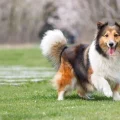Dogs are one of the most beloved and popular pets in the world. They are known for their loyalty, intelligence, and affectionate nature. However, not all dogs are the same. Some are bred for specific purposes, such as hunting or herding, and therefore have a strong prey drive.
Prey drive is an instinctive behavior that is present in many animals, including dogs. It is the urge to pursue and capture prey, such as small animals like rabbits, squirrels, and birds. Dogs with high prey drive have a strong desire to chase and catch these animals, which can be challenging for their owners.
Some of the breeds that are known to have high prey drive include Australian Shepherds, Border Collies, Terriers, Hounds, Retrievers, Spaniels, and Pointers. These dogs were originally bred for hunting or herding, and therefore have a natural inclination towards prey drive.
If you have a dog with high prey drive, it is important to understand that this behavior can be challenging to manage. Dogs with high prey drive can be easily distracted by small animals, which can lead to them running off and potentially getting injured or lost.
One of the ways to manage a dog with high prey drive is to provide them with plenty of mental and physical stimulation. Activities that challenge their senses, such as hiding treats, playing hide-and-seek, or participating in a search-and-rescue group, can help satisfy their desire to hunt and keep them mentally engaged.
Training is also an important part of managing a dog with high prey drive. Impulse control, recall training, and LAT (Look at That) techniques are all useful tools to teach your dog to ignore prey items and pay attention to you. It is important to work on these techniques in a controlled and safe environment, gradually increasing the distance and distraction levels as your dog becomes more reliable.
Dogs with high prey drive can be challenging to manage, but with proper training and plenty of mental and physical stimulation, they can be great pets. Understanding your dog’s instincts and providing them with appropriate outlets for their energy and drive can help keep them happy and healthy.
The Dog Breed With the Highest Prey Drive
Dogs that have been selectively bred for hunting or herding purposes are likely to have the strongest prey drives. These breeds include Australian Shepherds, Border Collies, Terriers, Hounds, Retrievers, Spaniels, and Pointers. These dogs have been bred over generations to exhibit the characteristics necessary for their specific jobs, and their natural instincts drive them to pursue and capture prey. Prey drive is a complex behavior that involves a combination of genetic predisposition and environmental factors, and can vary widely within breeds and individual dogs. However, in general, dogs that have been bred to hunt or herd are likely to have a higher prey drive than other breeds.

Preventing Prey Drive-Induced Highs in Dogs
Prey drive is a natural instinct in dogs that can be difficult to control, but it is possible to manage it. The key to stopping your dog from getting high on prey drive is to redirect their focus onto other activities. One effective way to do this is to provide your dog with mental stimulation through activities that challenge their mind, such as hide-and-seek, treat balls, and search-and-rescue games. These activities can help your dog to use their instincts in a positive way while also providing them with a sense of achievement. It’s important to note that managing prey drive is not a quick fix and may require some time and patience. However, with consistent training and positive reinforcement, you can help your dog to control their prey drive and channel their energy into more productive activities.
Signs of a High Prey Drive in Dogs
There are several signs that can indicate that your dog has a high prey drive. Here are some of them:
1. Chasing behavior: If your dog enjoys chasing animals, such as squirrels, rabbits, or birds, it could be a sign of a strong prey drive.
2. Fixation: If your dog becomes fixated on a particular animal and can’t take his eyes off it, even when you try to distract him, this could be another indication of a high prey drive.
3. Pouncing: Dogs with a strong prey drive may also exhibit pouncing behavior, where they crouch low to the ground and then leap forward to catch their prey.
4. Play behavior: If your dog enjoys playing with toys that resemble prey animals, such as stuffed rabbits or birds, this could be another sign of a high prey drive.
5. Hunting breeds: Certain breeds of dogs, such as terriers and hounds, have been bred specifically for their hunting abilities and are more likely to have a high prey drive.
It’s important to note that having a high prey drive doesn’t necessarily mean that your dog is aggressive or dangerous. However, it does mean that you may need to take extra precautions when walking your dog near other animals, and you may need to provide extra training and socialization to help your dog learn to control his instincts.
Training a Dog to Overcome Prey Drive
It is possible to train a dog with high prey drive to ignore their instincts and pay attention to their owner. This can be achieved through a combination of impulse control, recall training, and Look At That (LAT) techniques.
Impulse control training involves teaching the dog to resist the urge to chase or grab prey items. This can be done by teaching the dog to “leave it” and rewarding them for doing so. Gradually increasing the difficulty of the task can help the dog learn to control their impulses.
Recall training is also important for dogs with high prey drive. Teaching the dog to come when called can prevent them from chasing after prey and potentially getting into dangerous situations. Consistent and positive reinforcement is key to successful recall training.
LAT techniques involve teaching the dog to look at their owner instead of the prey item. This can be done by using a clicker or verbal marker to signal the dog to look at the owner and rewarding them for doing so. Gradually increasing the level of distraction can help the dog learn to focus on their owner even in the presence of prey.
It is important to keep in mind the distance and level of distraction when training a dog with high prey drive. Starting with low levels and gradually increasing them can help the dog succeed and prevent frustration or regression in their training. Consistency and patience are key to successfully training a dog to ignore their prey drive and focus on their owner.
Conclusion
Dogs are remarkable animals that have been bred for specific purposes, such as hunting, herding, and retrieving. Each breed has its unique traits and characteristics, including prey drive. While some dogs may exhibit a strong prey drive, it is possible to train them to focus on their owners and ignore distractions. By using impulse control, recall training, and LAT techniques, pet owners can help their furry friends become well-behaved and obedient companions. Ultimately, it’s important to understand that dogs require proper care, training, and attention, and when provided with these, they can bring immense joy and love into our lives.












